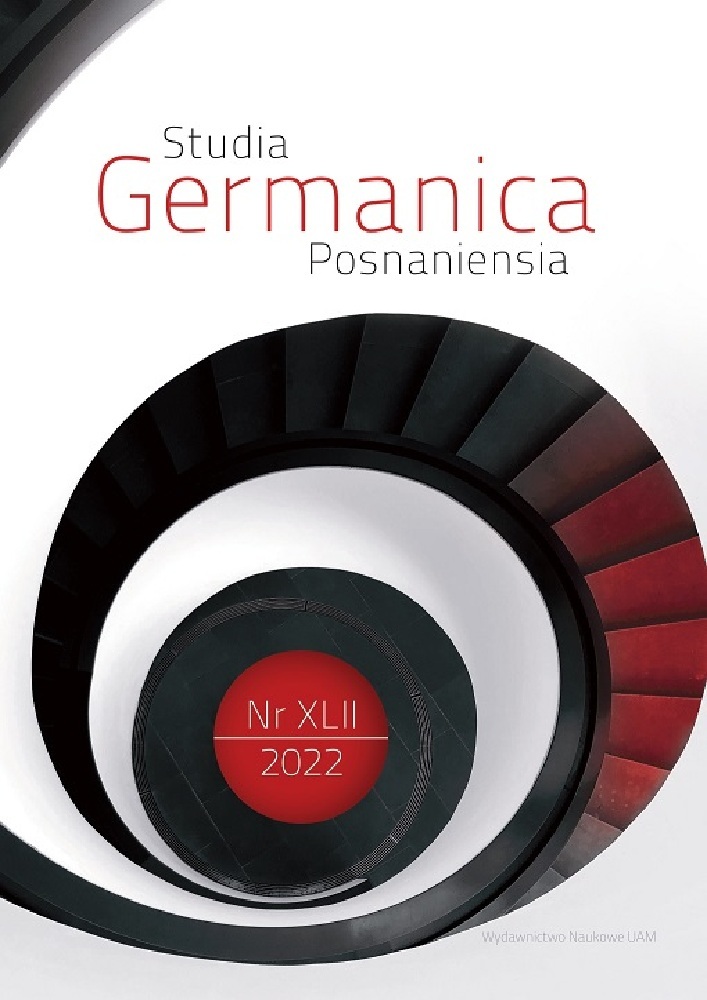Abstrakt
Bedrohte bzw. bedrohende Natur als das widerständige, oft auch gleichgültige, erhabene Andere des technisch-zivilisatorischen Fortschritts war schon immer ein Motiv in H.M. Enzensbergers Lyrik, auch im früheren Werk, und demzufolge ein vieldiskutiertes Thema in der Enzensberger-Forschung des späteren zwanzigsten Jahrhunderts, nicht zuletzt im Kontext der wachsenden Umweltproblematik und der Debatten über Atomenergie. Neuere ökokritische Tendenzen in der Kultur- und Literaturwissenschaft haben diese Diskussion wieder aufgegriffen, bleiben aber in den meisten Fällen einer etwas obsolet wirkenden aufklärungskritischen binären Logik von Mensch & Technik vs. Natur oder Umwelt verhaftet. – In diesem Aufsatz möchte ich mich mit Enzensbergers jüngerer (und jüngster) Lyrik befassen, die (wie übrigens Enzensbergers lyrisches Werk nach etwa 1990 insgesamt) auch in neueren Studien auffallend unterbeleuchtet bleibt. Dabei soll versucht werden, diese Lyrik mit jüngeren kulturkritischen und wissenschaftlichen bzw. literaturwissenschaftlichen Diskursen zu lesen, die sich als posthumanistische Kritik im Zeitalter des sog. Anthropozäns verstehen, und Enzensbergers literarische Aneignung solcher Diskurse kritisch zu überprüfen. Auf der Folie dieser posthumanistischen Reflexionen wird ersichtlich, wie in Enzensbergers jüngerer und jüngster Lyrik die alten binären Oppositionen von Mensch und Natur, Natur und Technik, Mensch und Tier, Bewusstsein und Körperlichkeit bzw. Materialität usw. als anthropozentrische Schemen dekonstruiert und andere komplexere und hybridere Lebensformen bzw. Netzwerke und kreatürliche Figuren, wenn auch in Enzensbergers vertrautem ironischem Ton, in den Blick genommen werden.
Bibliografia
Agamben, G. (1998). Homo Sacer: Sovereign Power and Bare Life. Stanford, California: Stanford University Press (Originalwerk veröffentlicht 1995).
Agamben, G. (2004). The Open. Man and Animal. Stanford, California: Stanford University Press (Originalwerk veröffentlicht 2002).
Braidotti, R. (2014). Posthumanismus. Jenseits des Menschen. Frankfurt a. M.: Campus (Originalwerk veröffentlicht 2013).
Deleuze, G. & Guattari, F. (1992): Tausend Plateaus. Kapitalismus und Schizophrenie (II). Berlin: Merve (Originalwerk veröffentlicht 1980).
Enzensberger, H.M. (1960, Neuauflage 1999). Landessprache. Frankfurt a. M.: Suhrkamp (abgekürzt als LS).
Enzensberger, H.M. (1960, Neuauflage 1999). Blindenschrift. Frankfurt a. M.: Suhrkamp (abgekürzt als BS).
Enzensberger, H.M. (1975). Mausoleum. Siebenunddreißig Balladen aus der Geschichte des Fortschritts. Frankfurt a. M.: Suhrkamp.
Enzensberger, H.M. (1991). Zukunftsmusik. Frankfurt a. M.: Suhrkamp (abgekürzt als ZM).
Enzensberger, H.M. (1995). Kiosk. Neue Gedichte. Frankfurt a. M.: Suhrkamp (abgekürzt als K).
Enzensberger, H.M. (1999). Leichter als Luft. Moralische Gedichte. Frankfurt a. M.: Suhrkamp (abgekürzt als LL).
Enzensberger, H.M. (2003). Geschichte der Wolken. 99 Meditationen. Frankfurt a. M.: Suhrkamp (abgekürzt als GW).
Enzensberger, H.M. (2004). Natürliche Gedichte. Berlin: Insel Verlag.
Enzensberger, H.M. (2007). Zu große Fragen: Interviews und Gespräche 2005-1970. Herausgegeben von R. Barbey. Mit einem Nachwort von Hans Magnus Enzensberger. Frankfurt a. M.: Edition Suhrkamp.
Enzensberger, H.M. (2009). Rebus. Gedichte. Frankfurt a. M.: Suhrkamp (abgekürzt als R).
Enzensberger, H.M. (2013). Blauwärts. Berlin: Suhrkamp Verlag (abgekürzt als BW).
Enzensberger, H.M. (2020). Gedichte 1950-2020. Berlin: Suhrkamp.
Enzensberger, H.M. (2020). Wirrwarr. Berlin: Suhrkamp (abgekürzt als WW).
Foucault, M. (2008). Die Ordnung der Dinge. Eine Archäologie der Humanwissenschaften. In M. Foucault, Die Hauptwerke. Frankfurt a. M.: Suhrkamp (Originalwerk veröffentlicht 1966).
Herbrechter, S. (2013). Posthumanism. A Critical Analysis. London, New Delhi, New York, Sydney: Bloomsbury.
Holthusen, H.E. (1980). Chorführer der neuen Aufklärung. Über den Lyriker Hans Magnus Enzensberger. Merkur, 34, 896-912.
Ludwigs, M. (2020). Ach! Amerika. Hans Magnus Enzensberger anders betrachtet. Darmstadt: wbgAcademic.
Marder, M. (2013). Plant Thinking. A Philosophy of Vegetal Life. Columbia University Press.
Melin, Ch.A. (2003). Poetic Maneuvers. Hans Magnus Enzensberger and the Lyric Genre. Evanston: Northwestern University Press.
Whitehead, A.N. (1920). The Concept of Nature. Cambridge: Cambridge University Press.
Wolfe, C. (2010). What is Posthumanism? Minneapolis, London: University of Minnesota Press.
Licencja
Prawa autorskie (c) 2022 Bart Philipsen

Utwór dostępny jest na licencji Creative Commons Uznanie autorstwa – Bez utworów zależnych 4.0 Międzynarodowe.
